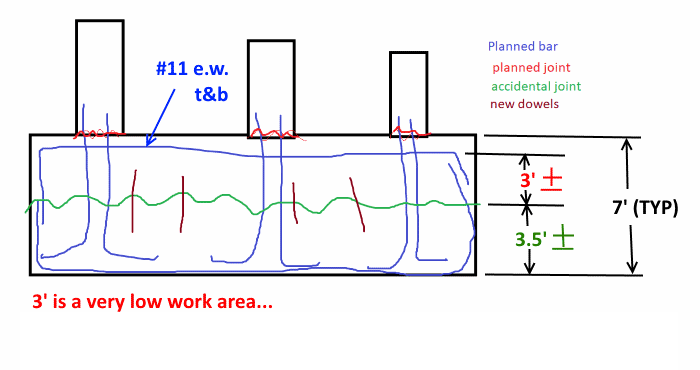-
1
- #1
canwesteng
Structural
- May 12, 2014
- 1,701
I'm concerned about the possibility of a contractor failing to complete a large mat (400 yards) in one go)=. I'd need a back up plan in case this does happen. I'm thinking the best case is get good consolidation of the concrete, get it roughly level, make sure we get some wet burlap on it, then come back the next day, roughen, insert dowels, wet the surface and continue pouring. I imagine we'll have to have mister on hand to maintain surface saturated dry condition, as it ends up being around 1200 sf. Other than transverse shear at the joint, is there anything I'm not considering?

![[idea] [idea] [idea]](/data/assets/smilies/idea.gif)
